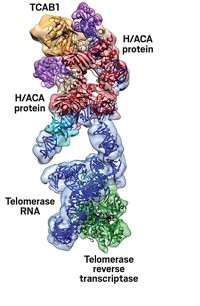Advertisement
Grab your lab coat. Let's get started
Welcome!
Welcome!
Create an account below to get 6 C&EN articles per month, receive newsletters and more - all free.
It seems this is your first time logging in online. Please enter the following information to continue.
As an ACS member you automatically get access to this site. All we need is few more details to create your reading experience.
Not you? Sign in with a different account.
Not you? Sign in with a different account.
ERROR 1
ERROR 1
ERROR 2
ERROR 2
ERROR 2
ERROR 2
ERROR 2
Password and Confirm password must match.
If you have an ACS member number, please enter it here so we can link this account to your membership. (optional)
ERROR 2
ACS values your privacy. By submitting your information, you are gaining access to C&EN and subscribing to our weekly newsletter. We use the information you provide to make your reading experience better, and we will never sell your data to third party members.
Synthetic Biology
Simplified route to phospholipid membranes
Soluble enzyme makes phospholipid membranes that could lead to synthetic minimal cells
by Celia Henry Arnaud
February 9, 2019
| A version of this story appeared in
Volume 97, Issue 6

In biological systems, phospholipids are made by enzymes embedded in preexisting phospholipid membranes. Such circular dependence has hindered the development of methods for making membranes for synthetic cells. Neal K. Devaraj and coworkers at the University of California San Diego get around this challenge by repurposing a water-soluble mycobacterial enzyme called FadD10 (Nat. Commun. 2019, DOI: 10.1038/s41467-018-08174-x). This enzyme uses dodecanoate (shown, DDA) as a substrate to form a fatty acyl adenylate (red with green star), which then reacts with a lysolipid (blue) to form a phospholipid. The resulting phospholipids assemble into vesicle-forming membranes. Vesicles encapsulating FadD10 continue to make phospholipids as long as the researchers supply the reactive precursors. In addition, the researchers were able to make phospholipid vesicles from scratch in the presence of DNA encoding the gene for FadD10. “This work has potential implications for the bottom-up generation of synthetic cells, as it minimizes the compounds required to build and grow membranes,” says Arnold J. M. Driessen, an expert on membrane biology at the University of Groningen. One drawback, according to Pasquale Stano, an expert on minimal cells at the University of Salento, is that the phospholipids were made from precursors that already have hydrophobic chains. “The next step will be synthesizing the long hydrophobic chains from small molecules,” Stano says.





Join the conversation
Contact the reporter
Submit a Letter to the Editor for publication
Engage with us on Twitter